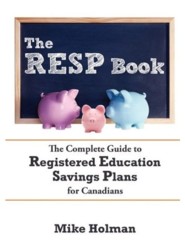This is the last post of the Big RESP Series. See the previous post on Keeping It All In Perspective.
One of the problems with RESPs is the number of rules surrounding them. This creates a product that is very expensive to administer for the RESP providers and government and very hard to understand for the average parent. Since the rules in their current form (more or less) have been around since 1998 and the government and financial companies have already created their systems and processes for these accounts there is not much point in changing them now. However, I’d like to put forth my ideas on how the RESP program should have been done.
One of the complicating factors of RESPs is the lifetime and annual limit on contribution grants. Because of this, the financial companies and government have to keep track of all the contribution amounts and for family plans, the allocation between beneficiaries.
A better way to do RESPs might have been to just offer tax free accounts ie you make contributions [edit] with no tax rebate [edit] , the investments grow tax free and then upon withdrawal the money is taxed in the hands of the student or if the student doesn’t go to school then it’s taxed in the hands of the subscriber as normal income (no AIP) tax.
What about the grant money you ask? Good point – take the money that would have been paid out in contribution grants and just hand it out to children of a certain age which is similar to Alberta’s ACE program. For example the government might give $100/yr to every child under 10. These grants would have to be put into RESP accounts and would be subject to the normal withdrawal rules outlined above.
Another option with the grant money would be to just give it to students who are actually in or about to start school. That way there are no grants to track and no investments accounts.
One of the benefits of this new RESP would be that it would cost the government the same amount of grant money, both the government and investment companies would benefit from lower administrative costs and lower income people can participate more easily. Currently it’s more middle and higher class people who get the biggest benefit from the RESP program but they are not the ones who need it as much.
That’s it for the RESP series so hopefully you enjoyed reading and learning from it (I know I did) and can use it for reference in the future.
